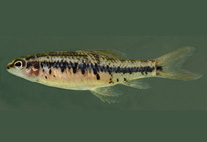Abstract
Morphological structures of the type species of Tetramelus, Paratetramelus and Heteroconnus, subgenera of Euconnus, are described and illustrated in detail. These three taxa, showing many similarities, are retained as separate subgenera within Euconnus. They probably form a natural group characterized by gradually thickened antennae, head and pronotum with thick bristles, pronotum bell-shaped, broadest in anterior half, and prosternum about as long as half length of prothorax. Tetramelus shows adaptations to edaphic life, such as lack of wings and associated structures, reduced eyes and often lightly pigmented body; these are also possible pre-adaptations that have enabled several highly specialized species to inhabit caves. Paratetramelus differs from Tetramelus primarily in the 'anthiciform' head with large eyes, and developed hind wings; Heteroconnus is unique in narrowly separated metacoxae and modified pronotum in males, bearing presumably glandular structures. These three subgenera show a broad distribution (Tetramelus worldwide; Paratetramelus in Africa, Madagascar and Nepal; Heteroconnus in Africa and New Caledonia) and therefore further study is required to verify the placement of species inhabiting locations remote from those where the type species of each subgenus occur.

